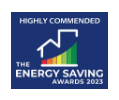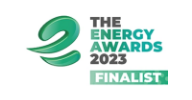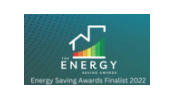Adveco takes a look at the advantages of deploying solar thermal for hot water generation in commercial properties. As part of an organisation’s wider sustainability plans, solar thermal offers a proven renewable technology that reduces emissions whilst able to integrate with other sustainable technology including air source heat pumps, direct electric and ultimately, through retained gas connections, hydrogen.
Commercial properties have traditionally sourced domestic hot water (DHW) from systems that have relied on gas boilers or water heaters because of the necessary high temperatures required for safe operation and the cost-effective operation it offers businesses. More recently there has been a trend toward all-electric systems in commercial new builds, driven by calls to support the government’s net zero strategy and cessation of new gas grid connections.
In 2020, according to the Department for Business, Energy, & Industry Strategy (BEIS), there were more than 1,656,000 non-domestic buildings in England and Wales. These properties are directly responsible for nearly one-fifth of the UK’s carbon emissions and, since DHW can account for as much as 30% of a business’s routine energy demands, addressing emissions from hot water generation becomes a key issue.
Whether a commercial hot water system uses gas or electricity, it will require a preheat source to reduce carbon emissions. Today there are realistically two main choices, either heat pumps or solar thermal. Neither technology offers a standalone response for the hot water system that will also require an alternate top-up heat source to meet minimum safe working flows of 60°C, peak demands and periods of low ambient temperatures or poor solar availability during winter months.
As a rule of thumb, new builds will invariably default to heat pumps, whereas properties with an existing gas connection will see greater advantages from the installation of solar thermal for hot water generation.
Currently, when comparing average non-domestic gas to electricity tariffs, electricity will cost as much as four and a half times that of gas. Even if a heat pump can demonstrate a 3 to 1 coefficient of performance (COP), and that needs to be for water with working flow temperatures of at least 45°C, that is not going to be enough to offset the difference in the cost of the gas-alone-fired alternative. Consider also that if direct electric is being used to top up the heat pump system and you are looking at an even wider divergence in operational costs.
Ideally allowing for approximately 20% solar fraction, or the percentage of the total thermal load satisfied by solar energy, employing solar thermal for hot water generation can be extremely effective in reducing reliance on the gas boiler.
Sizing Solar Thermal
Accurately assessing the demands and limitations of a building is critical for the correct sizing of the solar thermal system as the real world always seems to add unforeseen complexity. For instance, up to 25% of the total flat roof space available for solar panels will be limited by the allowance for access and prevention of shade which would otherwise compromise system efficiency. As building footprints become more compact and high-rise, especially in the case of city centres, available roof space to demand sharply decreases and solar thermal will come into competition with other heating and ventilation systems using the roof as real estate for installation. This is where solar thermal is more advantageous than solar photovoltaics (PV). Both approaches are directly comparable when used to offset direct electric water heating, with similar installation costs and annual savings. But in order to match three solar thermal panels taking up 6.6m² of roof space, a 4kW solar PV system will require 25m² to accommodate up to 16 panels in its system.
In general terms, each room in a hotel, care facility or education accommodation within an application design will require a 0.5 m² aperture, which is the area over which the solar radiation enters the collector. For flat plate collectors, the gross area and the aperture will be the same, with Adveco collectors, for example, each measuring 2.24 m². When sized and installed correctly, each solar thermal collector can contribute up to 1400kWh per annum, providing electricity savings of £300 electric and more importantly reducing emissions of CO² by 322kg. A commercial system sized to support an occupancy of 50 will typically require 12-24 panels, whilst smaller systems servicing up to 12 occupants will employ three to four panels. Collectively the panels deliver significant savings on the running costs that are not gained by using heat pumps.
There are also additional advantages that come with using solar thermal compared to heat pumps. Solar thermal operates silently meaning no sound pollution; there are no high global warming potential (GWP) refrigerants; and no specialist registration, such as F-gas, is needed for installation, although installers should be solar trained. A correctly installed and maintained solar thermal system will outlast a heat pump, and maintenance is low, especially if systems are deployed with a drainback capability.
Drainback
Using solar thermal for hot water generation works but capturing solar energy in a fluid that transfers heat indirectly to the DHW system. The solar fluid must be correctly managed, if left in the panel it can overheat, stagnating into a tar-like consistency which can leave collectors irreparable. Drainback is particularly important for preventing such overheating and resultant damage. It works by draining the fluid out of the system when not in use. This functionality is incorporated into all panels in Adveco solar system designs. Should the power be cut, the system naturally drains the fluid back to the reservoir, without the need for working components, providing guaranteed, low maintenance overheat protection. With such a system in place, solar fluid will last at least eight years before requiring a refresh. Drainback does require a 3m drop from the collector to the plant room to successfully operate, so the location of the plant room and the presence of flat or sloped roofs all come into play when calculating the most effective installation.
Hybrid Future
Fortunately, solar thermal also lends itself to working in conjunction with not only conventional gas heating but also other renewable technologies including air source heat pumps. This enables a variety of bespoke, hybrid applications to be considered to meet the varied demands of commercial buildings. As solar thermal is (at times) a high-temperature renewable source, the heat pump should be used to supply the initial water heating from cold to 45°C. Solar thermal is then used after the heat pump to top up water temperature from 45°C. Any additional required energy would then be supplied by an immersion heater. This allows the solar to offset the immersion consumption, instead of offsetting the heat pump which already benefits from the COP. Although the solar will lose some efficiency operating at higher temperatures it is better because the COP is higher than the loss of efficiency.
















